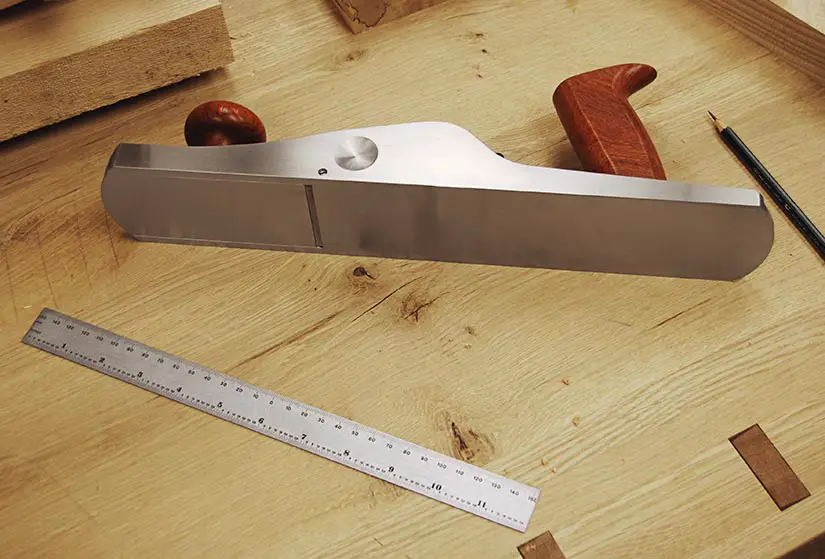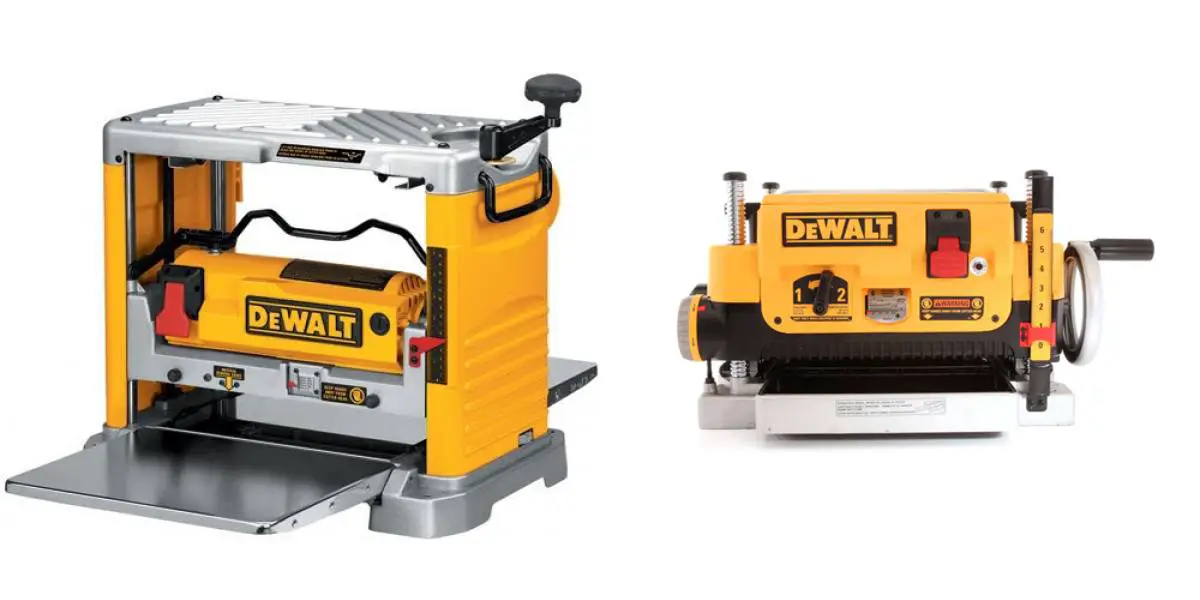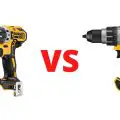Power Tools
Which Hand Plane Should I Buy?
Quite the important question this is. As with all things power tools, it is important to purchase the right ones based on your skills, budget, and many more factors. So, which hand plane should you buy? There are many types of hand plane woodworking Tools available, and making the right choice would be best. For this reason, I will walk you through a few considerations and the most popular hand plane types to make the choosing process easier.
A hand plane is a woodworking tool that’s powered by the user, and its purpose is to remove thin wood layers from workpieces to give them the desired designs and shapes.
While the design of a hand plane hasn’t transformed much since its inception, a functional hand plane will always be an important tool for all woodworkers and DIYers. I use a hand plane often for all types of jobs, including making furniture, shaping rough timber, and so on.
Here is how to decide which hand plane you should buy:
Factors To Consider When Choosing the Right Hand Plane
If you are a serious woodworker, then you must have a hand plane. However, if you are new, then this article will be plenty useful and guide you to the most suitable hand plane.
Prevalently, all hand planes aren’t equal; some work excellently from the beginning, while others aren’t so user-friendly unless you have the proper tools and skills to use them. With that in mind, let’s delve into the factors you need to consider:
Blade
Typically known as the “plane iron”, the hand plane’s blade can be the difference between chipped and properly shaped workpieces. So, first, consider the thickness of the blade before making a purchase.
Most of the time, you will get incredibly good results when you have a hand plane with a thick blade, as opposed to a thin one. This is due to the unrivaled chatter resistance it delivers, thanks to the vibration and motion of the blade during use.
Usually, thin blades vibrate a lot more than their thick counterparts as they cut through lumber, resulting in a coarse and uneven surface. On the other hand, thick blades fend off chatter, leading to a smoother, more even surface.
Low-priced hand planers feature blades of 80 to 90 thousandth of an inch, while the more expensive options are equipped with a blade of approximately 100-thousandth or more. While the difference is trivial, it creates all the difference in terms of results.
Also, consider the quality of the blade. Top-quality hand planes have O1 steel blades, a solid grade you can sharpen as much as you’d like and use for a long time. Most high-end hand planes will point out the steel grade on the label, though some don’t.
The most suitable way to assess the blade is by sharpening it and then seeing how it works. A reliable blade will serve you for long and deliver quality results.
Entire Blade Support
The performance of your hand plane will also be altered by a section known as the frog. This is an angled steel section that’s fixed to the plane using a bolt to offer the blade firmness.
Poor-quality hand planes will feature somewhat flat frogs, while top-quality options will sport a flat true frog that holds the blade across its complete surface area.
You can check the quality of the frog by detaching it and applying 3-in-1 oil over the bearing surface, and using it against fine-grit sandpaper on an even surface such as your workbench or table saw bed. A reliable frog will deliver excellent results, while poor-quality ones will deliver sub-standard results.
Flat Sole
The last feature I recommend you consider is the sole. The bottom part of a plane is referred to as the sole, and its flatness signifies quality. An entirely even, smooth sole allows the hand plane to slice through the wood in a level way, resulting in lengthy, uniform, and smooth shavings.
You can evaluate the flatness of the sole similar to how you checked the frog’s flatness; using fine sandpaper, flat surface, and oil. If you confirm that it’s adequately flat, then you’re good to go! If it’s not entirely flat, it requires some improvement, and I wouldn’t recommend purchasing it.
A quality plane is also made of high-quality ductile iron, as it is more robust than cast iron.
Types of Hand Planes Woodworking Tool
As pointed out, hand planes come in different types. Here are the most common ones:
Bench Plane
A bench plane is a must-have for a carpenter. They come in three types, each serving a different purpose. Here they are:
Jack or Fore Plane
This is the hand plane you should use first. It usually has 12-to-20-inch length. Its purpose is to decrease the size of the stock.
Jointer
Once you’re done with the jack plane, you will take the jointer and use it to straighten the surface. It usually sports a 22-inch length.
Smoothing Plane
This is the tool you will use to finish your work. When it comes to size, a smoothing plane is normally 10 inches or less.
Scrub Planes
These planes are extremely lightweight and generally utilized to quickly remove particles from wood. You should only use this type of plane on smaller workpieces or to do minor tasks.
Block Plane
This one works almost like the block plane. A block plane is flexible and built to decrease stock. This hand plane will be useful for tasks that you can’t do on your workbench. Plus, block planes facilitate one-hand use.
Shoulder Plane
This type of plane is used to cut nooks that connect two sections of the layers of wood. Moreover, they are versatile inclusions and allow you to make complete width cuts with long blades. Lastly, these tools are ideal for making accurate cuts on a corner.
Rabbet Planes
Rabbet planes come in handy when you need to cut through wood fibers before the edge to make neat cuts over the wood’s grain.
Why You Should Trust Us
At Woodworking Tool Guide, we know one size doesn’t fit all! We cater to every woodworker, from beginner to pro, with insights and recommendations tailored to your skill level, project needs, and budget. We take the guesswork out of choosing the right tools, whether you’re tackling your first crafting a masterpiece for the ages. So grab your chisel, join our community, and let’s build something amazing together!
Woodworking Tool Guide wasn’t just born, it sprouted from a seed of passion for the craft. What started as a joyful exploration blossomed into a trusted online haven for fellow enthusiasts like you. We pour our love into meticulously chosen review selections, meticulous hands-on testing, and lab-backed insights, all to empower you with reliable, comprehensive information you can build on. So, grab your tools, trust our guidance, and let’s build something beautiful together!
Passion-Driven Expertise
Our journey started with a shared love for woodworking. The team behind the Woodworking Tool Guide is comprised of individuals who are not just writers but passionate woodworkers themselves. This shared enthusiasm ensures that our content is crafted with a deep understanding of the craft and an authentic appreciation for quality tools.
Top Tool Guides Online
Woodworking Tool Guide has rapidly ascended to become one of the premier online destinations for tool guidance. Our commitment to excellence and the accuracy of our information has positioned us as a reliable source for both beginners and seasoned woodworkers seeking trustworthy advice on the best tools for their projects.
User-Centric Approach
Our content caters to every woodworker, from rookies just starting out to seasoned pros tackling intricate projects. We tailor our insights and recommendations to your skill level, project needs, and budget, ensuring you find the perfect tools to match your unique woodworking journey. So step into your workshop, grab your tool belt, and let Woodworking Tool Guide be your trusted companion as you craft your masterpieces.
Continuous Support and Innovation
Woodworking is an ever-evolving craft, and so is our commitment to supporting you. We are dedicated to bringing you the latest information on woodworking tools, techniques, and trends. Our team is actively working to expand our content and bring you more valuable insights, ensuring that you stay well-informed in your woodworking adventure.
Hands-On Experience
Ditch the endless research rabbit hole! At Woodworking Tool Guide, we believe in actionable advice, not armchair analysis. We get our hands dirty, putting every tool through its paces in real-world woodworking scenarios. Whether it’s the precision of a table saw, the versatility of a router, or the tactile satisfaction of a handplane, we test for performance, durability, and user-friendliness. No more sifting through dry specs – we deliver practical insights you can trust to transform your woodworking dreams into reality.
Woodworking Tool Guide isn’t just a review site, it’s your trusted companion on the sawdust-filled path to woodworking mastery. Our expert team, led by veteran David Jones, meticulously tests and explains tools in terms you understand. We cut through the jargon, bias, and confusion with real-world insights and honest evaluations. Join our passionate community, where decades of experience, cutting-edge knowledge, and shared love for the craft come together to guide you every step of the way. So grab your chisel, buckle up, and let’s embark on this exciting woodworking adventure, together!
Take Care of Your Hand Plane!
Like all other woodworking tools, you have to remember to properly take care of your hand plane. There are several ways to do this, including using your hand plane for the right task. Considering the different hand plane types, with each serving a different purpose, it’s important to use it for its purpose.
Next, I recommend learning how to use your hand plane. While hand planes are generally difficult to use, you should go through the entire learning curve before you begin using them for your projects.
Also, be cautious, not to cut yourself or ruin your workpiece with the hand plane. Now that you know what to look for in a hand plane, you’re good to go and find the right one.
Best of luck!





